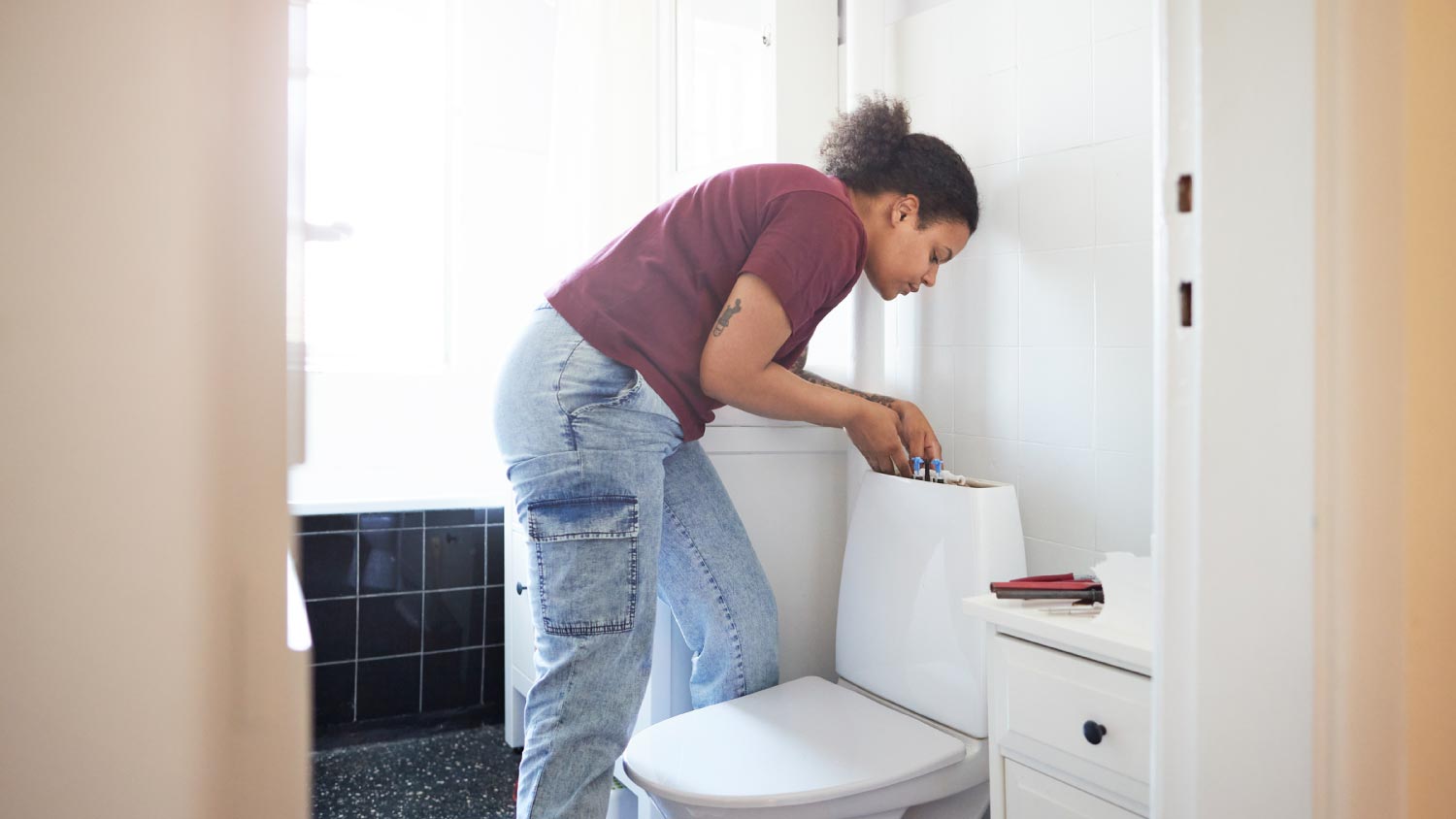
Discover the cost to install a gas cooktop. Learn about average prices, key cost factors, and tips to save on your gas cooktop installation project.
Save money by tackling these simple appliance repair projects yourself


A clogged disposal one day and a running toilet the next. Isn’t adulting fun? Having a pro keep up with your appliance maintenance can take a huge chunk out of your home maintenance budget.
However, not every issue requires a phone call to nearby appliance repair companies. You can tackle many simple repair projects yourself, even if you’re not a seasoned handyperson. Here are eight DIY appliance repair jobs to try.
Is your disposal making a weird humming or buzzing sound without getting the job done? You’re likely dealing with a clogged disposal. Before you pick up the phone and call a plumber, pick up a small Allen wrench with the hexagonal end instead (it’s probably under the sink where the disposal is installed).
If you can’t find one in your home, grab one at your local home improvement store for $10 or so. Turn off the disposal. Then, fit the wrench into the matching opening on the bottom of the disposal and twist it to move it in a complete circle. If this doesn’t clear the clog in your disposal, it’s time to call in a pro. Hiring a plumber to clear a sink blockage costs a flat fee of $110 to $215, according to HomeAdvisor.
Is your sink’s faucet near the end of its useful life? If your faulty faucet has multiple connections underneath, replacing it is more complex, and you’ll probably want to call a plumber to handle this one. But if you’ve got a centerset faucet, swapping it for a new model is easy. Just make sure you turn the water supply off before you start to replace your faucet.

A toilet that runs constantly is more than just annoying; it can wreak havoc on your water bill. With a few tools and materials, you can fix a running toilet fairly easily in just a few hours. Plus, doing it yourself can save you $100 to $400, which is the cost of having a professional plumber repair your toilet.
If your clothes are still damp after a drying cycle, you may have a faulty thermostat—the part that controls your dryer temperature. There are usually several thermostats in your dryer. Thermostats are sensitive, often breaking down due to a dirty filter or clogged vent.
It won’t cost too much to replace the part. You can usually grab one for $10 to $20 at any large home improvement store. To replace it, just shut off electrical power to the dryer, remove the back panel, swap the part, and reattach the panel.
There are a few reasons your freezer won’t freeze. The most common culprit is the freezer fan. You might consider a replacement if it's spinning or making a loud noise. The fan itself costs around $100 to $160, and the replacement process only takes about ten minutes to remove the back cover and swap for a working part.
A service professional would typically charge $100 to $150 just to inspect your appliance plus the cost of the part. Repairing on your own saves you the service charge.
A dishwasher that doesn’t drain or overfills might signal a clogged drain. Cleaning one is gross, but it’s fast and free. What’s more, the average dishwasher repair costs anywhere from $160 to $300. Just make sure you have thorough, current instructions on working with your specific dishwasher model (the manufacturer’s guide will help). If you find the repair requires dealing with the motor, pump, or heating element, let a pro tackle it.
Puddles on your kitchen floor—spilled milk notwithstanding—are never good. If the leaks stem from your refrigerator, the likely culprit is a clogged defrost drain. Dust, hair, pet fur, and household dirt can all create a clog that leads to leaks. Fortunately, cleaning it out is usually fairly simple.
Find a manual for your refrigerator model (look online if you can’t locate your paper copy), then use it to find the defrost drain and flush it with warm water to remove the clog.
An oven that doesn’t heat up makes dinner hard to bear. If your gas oven isn't warming up, check the connection and the gas valve, especially if you’ve recently had work done. Your electric oven should get at least 200 volts of power. If you don’t have a voltage tester, you can purchase one online. You can test it on your own, but you’ll need to call in local appliance repair experts for repairs.
From average costs to expert advice, get all the answers you need to get your job done.

Discover the cost to install a gas cooktop. Learn about average prices, key cost factors, and tips to save on your gas cooktop installation project.

Discover the average washing machine repair cost, key price factors, and expert tips to help you budget and save on repairs for your home.

Whether or not the cost of installing a pot filler is worth it depends on your kitchen needs. Learn why the faucet itself is often the least expensive factor.

Your gas oven might not heat up for various reasons, such as problems with the circuit breaker, igniter, or gas supply. You can troubleshoot to figure out why your gas oven won’t heat up, but you may need to reach out to a professional.

Wondering who to call to hook up a gas dryer? Call a licensed plumber or contractor to hook up your gas dryer and make sure it's venting properly.

Let precision in the kitchen protect you from water contamination. Follow these simple steps for installing a dishwasher air gap.